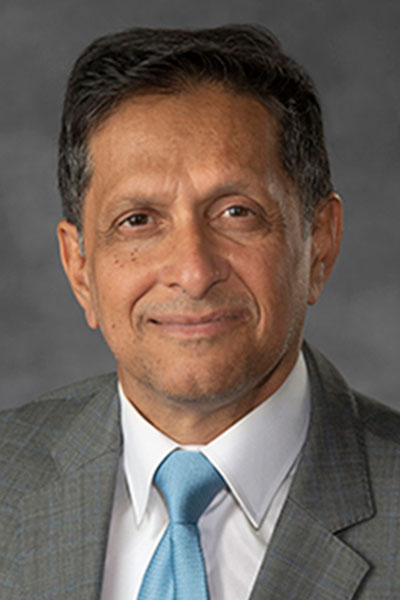
A novel triple therapy, retatrutide, could continue the string of game-changing metabolic agents that began with semaglutide, a glucagon-like peptide 1 (GLP-1) receptor agonist for type 2 diabetes and obesity, and continued with tirzepatide, a dual GLP-1/glucose-dependent insulinotropic polypeptide (GIP) receptor agonist. Retatrutide adds glucagon receptors to the GLP-1/GIP target list and could be the first type 2 diabetes agent to directly improve liver disease.
“Traditionally, we have employed glycemic-focused approaches to diabetes,” said Arun J. Sanyal, MD, Professor of Medicine, Physiology, and Molecular Pathology and Interim-Chair of Gastroenterology, Hepatology, and Nutrition, Virginia Commonwealth University. “With GLP-1, GIP, and now glucagon receptor agonists, we may finally be able to holistically manage the multiple morbidities we see in type 2 diabetes.”
Dr. Sanyal will discuss retatrutide and nonalcoholic steatohepatitis (NASH) during Retatrutide (LY3437943), a Novel GIP/GLP-1/Glucagon Receptor Triagonist—Obesity, NAFLD, and T2D Phase 2 Trial Results on Monday, June 26, at 1:30 p.m. PT in Ballroom 20A-C of the San Diego Convention Center. This symposium also will be available via livestream for registered meeting participants.
Initial results of a phase 2 trial for retatrutide make the drug a potential new blockbuster for type 2 diabetes, weight loss, and NASH.
Julio Rosenstock, MD, Principal Investigator and Director of Velocity Clinical Research at Medical City and Clinical Professor of Medicine at the University of Texas Southwestern, will discuss type 2 diabetes results. Retatrutide Principal Investigator Ania Jastreboff, MD, PhD, Associate Professor of Medicine, Director of Weight Management & Obesity Prevention, and Medical Director of the Yale Stress Center, Yale School of Medicine, will discuss obesity results.
Between 5% and 7% of individuals with type 2 diabetes develop liver fibrosis and NASH, Dr. Sanyal noted, a significant cost to both patients and their families as well as the health care system. While GLP-1 and GIP receptor agonists modulate appetite and glucose regulation and show benefits in NASH, earlier agents have no direct effect on the liver fibrosis seen in more advanced disease.
The liver has no GLP-1 or GIP receptors but is rich in glucagon receptors, which makes retatrutide an attractive option in the nephrology community. As a glucagon receptor agonist, retatrutide appears to ease oxidative stress in liver mitochondria, which is a major driver of NASH progression, Dr. Sanyal explained.
Improving fat oxidation can improve mitochondria function and provide anti-fibrotic benefits, at least in preclinical data. Animal models also show improved bile acid profiles, which also reduces fibrosis.
“There are multiple ways one would expect the addition of a glucagon receptor agonist to translate into a more aggressive benefit than just GLP-1/GIP,” Dr. Sanyal said. “Adding glucagon to the target mix will promote antifibrotic benefits, at least that’s the hope.”
Initial retatrutide results showed an improvement in weight loss over tirzepatide, which showed a 20% weight loss in 72 weeks. That difference prompted a surge of interest in the new agent.
“The medical community and society as a whole are finally moving away from the idea that obesity is just too many calories and accepting the reality that obesity is a medical problem that needs a holistic approach, not just dieting,” Dr. Sanyal said. “There is tremendous excitement that triple therapy may finally allow us to address the multiple metabolic factors that affect people who are obese whether or not they have type 2 diabetes. That’s really what is driving this research program.”